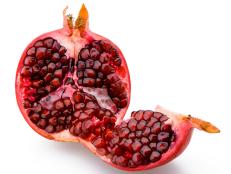Nutrition News: Fast-Food Kids, Vegetable Supply, Plate Size Matters

Lana Langlois
If you think America has been easing off its love affair with fast food, a new CDC report offers bracing news: On any given day, according to the study, more than one-third (34.3 percent) of all U.S. kids and teens (ages 2 to 19) scarf down some kind of fast food — a number that has remained relatively stable over the past 15 years, despite our cultural push for more healthful eating. And while almost 12 percent of kids and teens got fewer than 25 percent of their daily calories from fast food, nearly 11 percent of them got between 25 and 40 percent of those calories from it — and 12 percent of them gobbled up more than 40 percent of their daily calories from places that traffic largely (though of course not exclusively) in burgers, fries, sodas and the like. Gulp.
Speaking of our predilection for fries and ketchup, another government study, this one from the USDA’s Economic Research Service, has determined that potatoes and tomatoes, much of them frozen or processed, account for about half the vegetables available for U.S. consumption. Add lettuce and that number rises to around 60 percent of the vegetables available in the U.S. That means the U.S. food system may not be providing Americans with the amount or variety of the vegetables its government’s dietary guidelines recommend. Adults are supposed to consume 2.5 to 3 cups of vegetables — a varied mix of them, including lots of dark, leafy greens — per day, according to USDA dietary guidelines, yet the agency has concluded that only 1.7 cups of vegetables — mostly potatoes, tomatoes and lettuce — per person are available. Bigger gulp.
Time to shop for smaller plates? A large study review has determined that adults consistently eat more food when they are given bigger portions, plates or silverware. The effect held for men and women, for those who are overweight and for those watching their weight, but, interestingly, not for children. “It’s important to be aware of environmental influences and to consider what you put on your plate or purchase … and … to encourage shops and restaurants to serve smaller portions,” lead author Gareth J. Hollands, of the University of Cambridge, told The New York Times. The authors estimate that reducing the size of portions, packages and tableware could shrink daily caloric intake by as much as 13.5 percent in the U.K. — and by even more stateside.
Amy Reiter is a writer and editor based in New York. A regular contributor to The Los Angeles Times, she has also written for The New York Times, The Washington Post, Glamour, Marie Claire, The Daily Beast and Wine Spectator, among others, as well as for Salon, where she was a longtime editor and senior writer. In addition to contributing to Healthy Eats, she blogs for Food Network’s FN Dish .

































